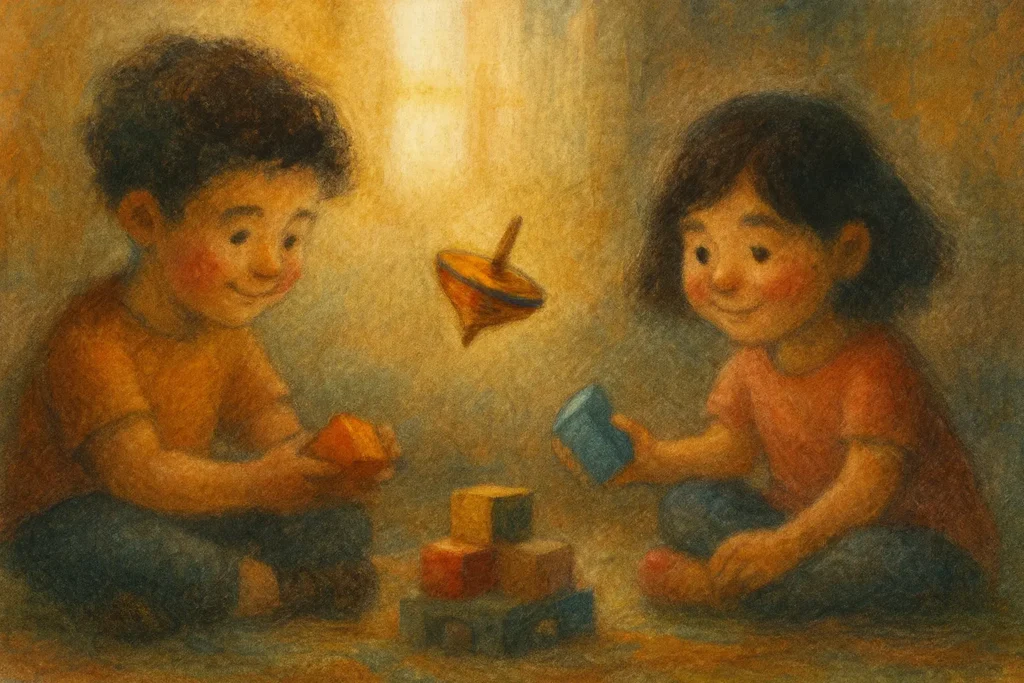A classroom is far more than four walls where information is transmitted—it’s a social space where children feel valued, differences are met with respect, and each individual can fulfill their potential. Realizing this vision requires truly inclusive and accessible pedagogical practices. That is precisely where my international eTwinning project, “Game‑Based Approaches for Inclusive Classrooms,” transformed aspiration into reality through the power of play.
The project brought together teachers and students from Turkey, Spain, and Croatia to promote equal participation within the classroom. Framed as not merely pedagogical but also ethical and philosophical, the initiative fostered a learning climate that viewed diversity as an asset. This inclusive ethos extended beyond individual classrooms to bridge communities across countries.
From inception to final output, I took an active role. This was more than coordination—it reflected an ethical responsibility, a humanistic conviction, and an academic passion.
Play as a Foundation for Learning
Extensive research in child development identifies play not only as entertainment but also as a primary vehicle for cognitive, social, and emotional learning. Play provides children with experiential, discovery-based opportunities to make sense of their environment. Contemporary learning theories that emphasize social interaction further underscore these processes.
Likewise, inclusive education demands the active engagement of all students—regardless of ability—by designing learning environments that respect and support individual differences without exclusion. Play serves as a powerful intersection of these two approaches, creating shared experiential spaces in which everyone can contribute.
Core Principles of Our Project
We structured the project around the following guiding principles:
- Designing original games that make learning fun, meaningful, and motivating
- Creating multimedia content addressing visual, auditory, and kinesthetic learners
- Ensuring games are accessible and inclusive for disadvantaged, disabled, or special-needs students
- Supporting teamwork, communication, and collaboration through gameplay
- Empowering students not just as players but as game designers and co-creators to boost confidence
- Cultivating warmer, safer teacher‑student relationships through game-based interaction
In total, 12 schools and over 300 students from three countries participated actively. Through authentic joint activities and collective products, the project emerged as a cross-European model—not just confined to classrooms but drawing wider interest.
Why Play Matters
Play offers more than leisure; it grants children a platform to express themselves, experience acceptance, and make meaning. Within educational settings, it becomes one of the most authentic forms of existence—where children can reveal their identities, experiment without fear of failure, and innovate.
When everyone can join, rules are co-constructed, and common goals are shared, play reinforces the democratic structure of the classroom. In this regard, it functions as a lived practice—embodying the values of inclusive education.
Dear reader—here’s a suggestion you can implement today to foster inclusivity in your classroom:
- Transform a lesson topic into a playful, engaging game together with your students.
- Identify learners’ preferences—is a student more visual, auditory, or tactile—and tailor your games accordingly.
- Design games that allow every student to participate.
- Encourage collaborative learning—it’s fantastic for nurturing social skills.
- Ask “How did that make you feel?” rather than “What did you learn?”—because emotions deepen learning.
Over the course of leading this project, I realized not only were children evolving—but my own perspective shifted and grew. Through the space that play offered, each child’s uniqueness became more visible and more deeply appreciated. What remained were not merely new skills but a classroom culture built on trust, empathy, and equality.
Play can transform a class. Sometimes, it can even change a teacher’s world.
And today I know:
If a child doesn’t wish to participate in a game, the limitation lies not within them—but within the game itself.
Together, we succeeded in transforming that game.
Memorable Moments from the Project
- Sakar Rabbit and Family
Students from all three countries collaboratively wrote the story Sakar Rabbit and Family, each school adding their own characters and plotline to what became a rich, inclusive tale wholly authored by children. - From Story to Kahoot Quiz Showdown
Inspired by their co‑written story, the students created Kahoot quizzes. As they revisited their own narrative, every correct answer was celebrated with laughter—an uplifting blend of fun and formative assessment. - Taking a Global Classroom on Zoom
Turkish, Spanish, and Croatian students met on Zoom to share their cultures, gameplay experiences, and smiles. Introverted learners found a voice, differences were applauded, and friendships formed across screens.
References
- Piaget, J. (1951). Play, Dreams and Imitation in Childhood.
- Vygotsky, L. S. (1978). Mind in Society: The Development of Higher Psychological Processes.
- (2020). Inclusive Education: What Does It Mean?
- Zosh, J. M., et al. (2018). Learning Through Play: A Review of the Evidence. LEGO Foundation.
- Booth, T., & Ainscow, M. (2011). The Index for Inclusion. Centre for Studies on Inclusive Education.
Discover more from Serkan Akbulut, PhD(c)
Subscribe to get the latest posts sent to your email.

